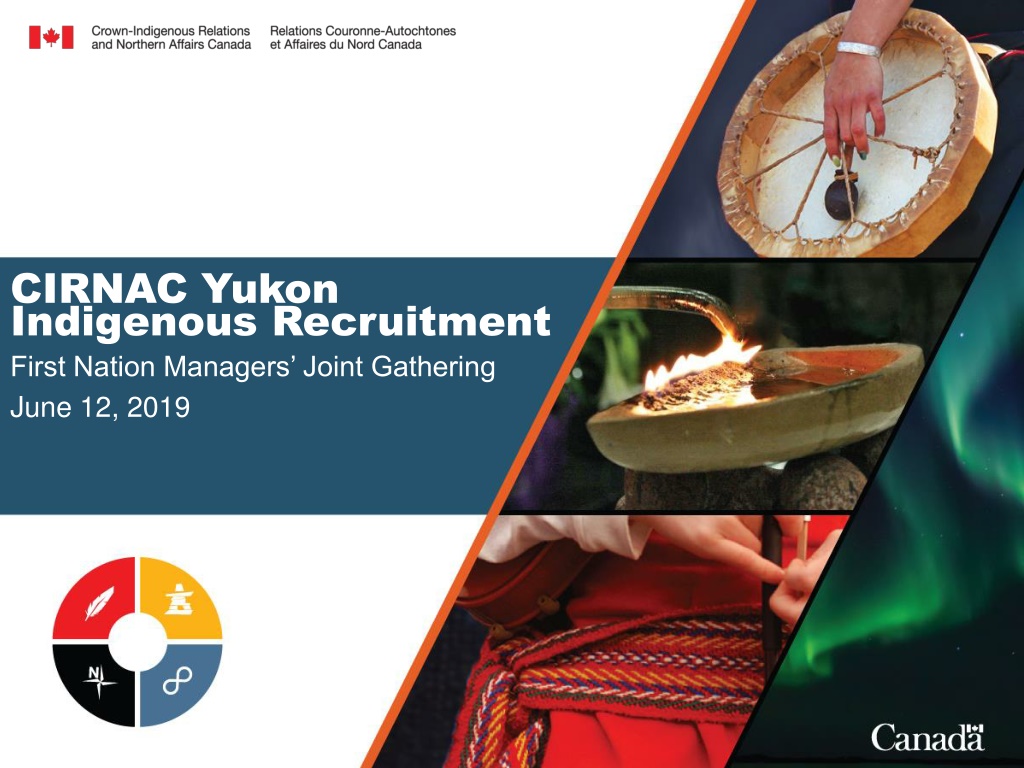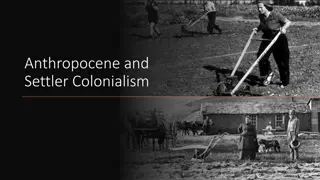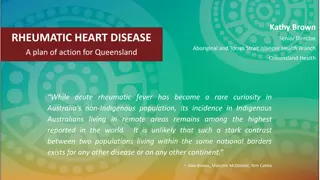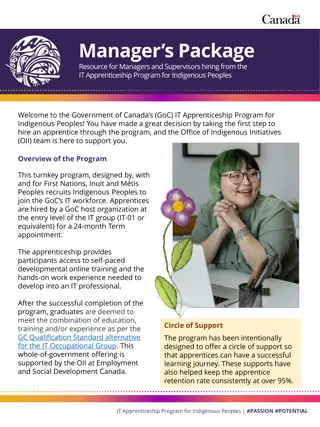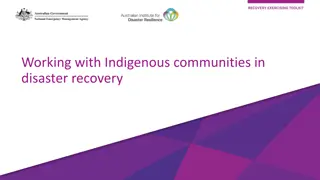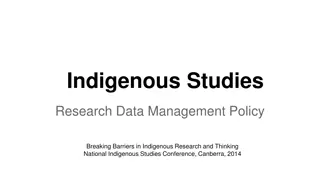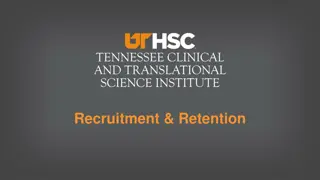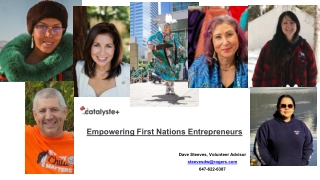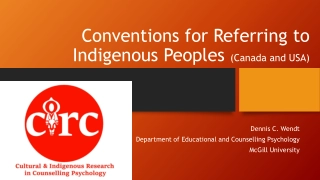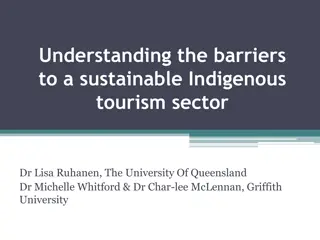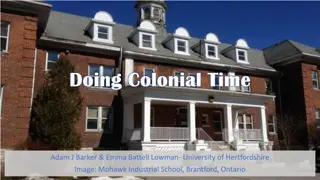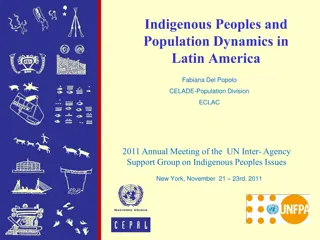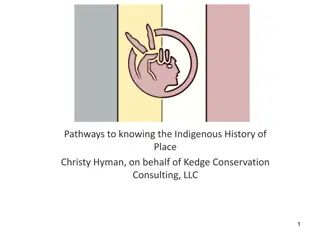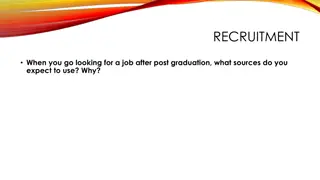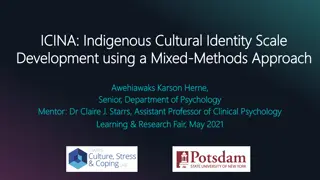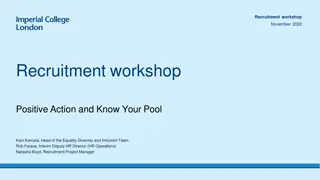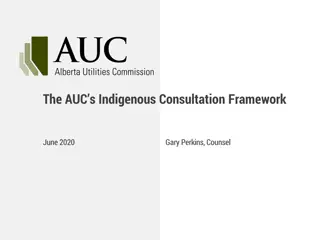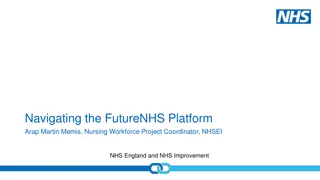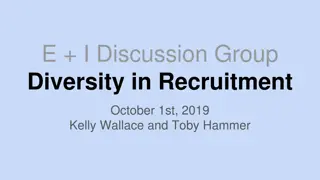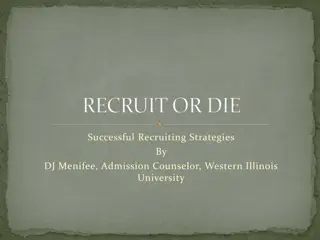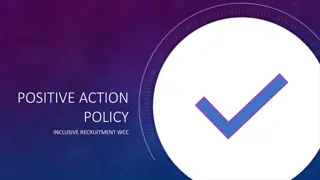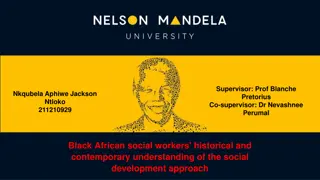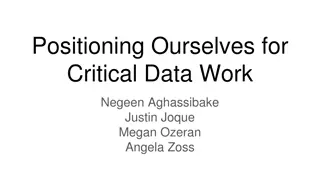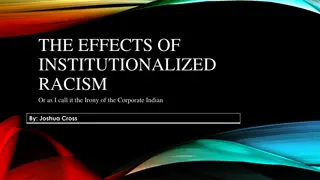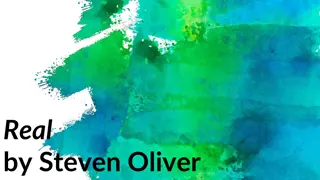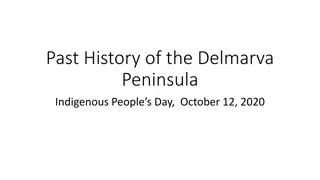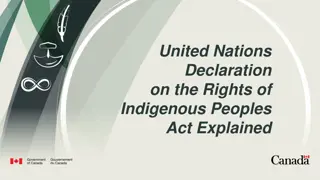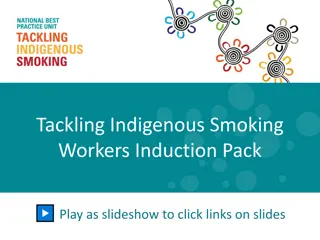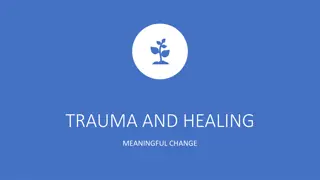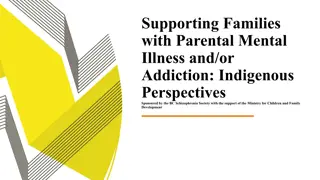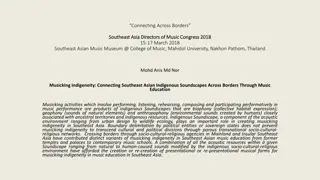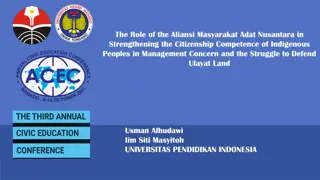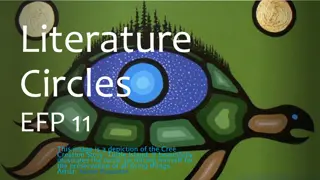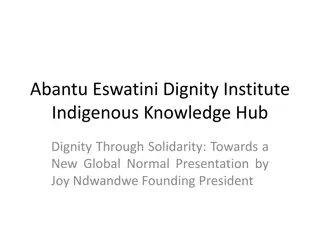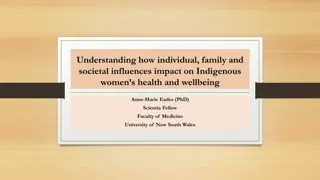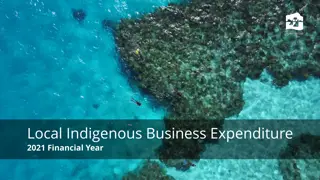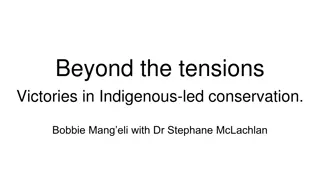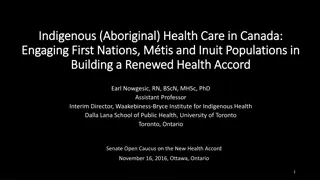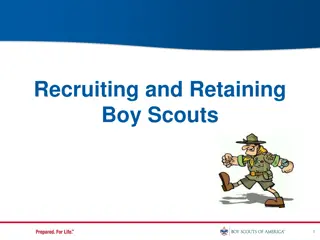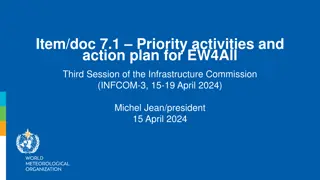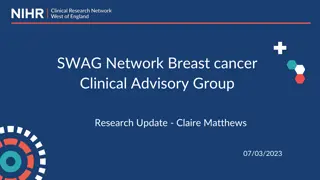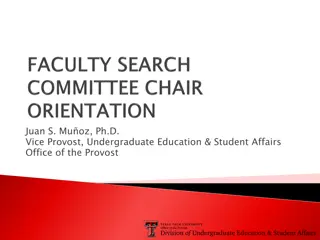Indigenous Recruitment Action Plan Overview
CIRNAC Yukon developed an Indigenous Recruitment Action Plan focusing on three themes: Outreach, Renewing the job advertisement, and Mentorship. The plan includes various activities such as attending job fairs, partnering with colleges, and creating employee profiles to attract local Indigenous candidates. By emphasizing monitoring and reporting, the plan aims to enhance Indigenous recruitment and retention efforts.
Download Presentation

Please find below an Image/Link to download the presentation.
The content on the website is provided AS IS for your information and personal use only. It may not be sold, licensed, or shared on other websites without obtaining consent from the author. Download presentation by click this link. If you encounter any issues during the download, it is possible that the publisher has removed the file from their server.
E N D
Presentation Transcript
CIRNAC Yukon Indigenous Recruitment First Nation Managers Joint Gathering June 12, 2019
History and Resources INAC developed the Employment Equity Recruitment Plan in 1995 INAC affirmed the Fifty-percent Aboriginal Hiring Strategy in November 1996 PSC increased flexibilities under the New Direction in Staffing protocol in April 2016 INAC introduced the Indigenous Recruitment and Retention Framework in December 2016 Numerous other reports and strategies published CIRNAC Yukon wanted to identify tangible activities to support the frameworks already in place It was recognized that some of these activities may already be happening, but we weren t tracking or reporting on them. Action plan was co-developed by an Indigenous Manager and two Indigenous employees On-going consultation with Indigenous employees, and several groups including Indigenous employees, union and middle managers 2
What does the Action Plan look like? Three broad themes: Outreach Renewing the job advertisement Mentorship Each theme has five activities Three overarching goals Monitoring and Results Reporting 3
Theme 1: Outreach Attended job fair in September and held a speed staffing event in February. 4 classroom visits to advertise speed staffing. A CANE member attended Orientation to the Public Service to speak about CIRNAC HR met with the college to discuss interest in supporting students work experience. Programs of interest were Indigenous Governance, Older Worker Program, and Business Admin. Also reached out to Skookum Jim to promote CIRNAC and FSWEP. A profile of an indigenous student was created and used in marketing. All external jobs are posted at Wayfinder. Yukon College presentations or workshops Community Outreach link with community visits Co-op/Internship/Practicum work with Yukon College to attract local Indigenous candidates at all levels Employee Profiles CANE to develop 4 employee profiles to be used in advertisements, websites, or as communications products Wayfinder Yukon post advertisements, potential short-term recruitment 4
Theme 2: Renewing the job advertisement Employment Central distributes to all First Nations, all external ads. Email list of Indigenous education departments were used for student outreach. Speed Staffing event was advertised in First Nation newsletters. All external advertisements are posted in both locations. YouTube links are included on ads. Additional information to market community, the department, and what we can offer. Social media featured heavily as an advertising mechanism for student speed staffing with good results. Co-op continues to be a challenge. All requests to hire non-indigenous students went through YMC. Exploring different universities and student outreach. First Nations Job Boards update contact/distribution list for job advertisements Broader Advertising go beyond GCJobs; postings on yuwin.ca, Employment Central and wayfinderyukon.ca Enhancing the Advertisement incorporate interesting stats, links and videos highlighting Whitehorse, Yukon and work/life balance Social Media collaborate with Communications to investigate using digital media to highlight employee profiles, jobs, and why CIRNAC is a great place to work Student Recruitment make all efforts to recruit Indigenous students 5
Theme 3: Mentorship Interchange Canada reciprocal agreements and assigning a mentor Indigenous Students assigning a mentor (preferably Indigenous) Indigenous Employees assigning a mentor (preferably Indigenous) FSWEP investigate options for part-time employment for high school or college students Job Shadowing CANE to organize take a student to work day for high school students Unfortunately there was no mentorship as a direct result of the Indigenous Recruitment Action Plan. No interchanges or job shadowing occurred during the year. One Indigenous FSWEP student worked part-time and assisted with Outreach activities at Yukon College 6
Goal 1 50% of all new hires are Indigenous, and complete the Affirmation of Aboriginal Affiliation Form (AAAF). In cases where Indigenous candidates are found qualified, Directors will be required to report to YMC if they wish to hire a non-Indigenous candidate. 5 appointments of 13 were made to Indigenous candidates (38.4%). When an Indigenous candidate was found qualified, they were appointed 5 out of 6 times (83.3%) 7
Goal 2 100% of all student hiring (FSWEP and Co-op) will be self-declared Indigenous students, where Indigenous students have been referred and are found qualified. Managers shall make all efforts to recruit Indigenous students. Indigenous students were hired for FSWEP positions 100% of the time when they were referred. None of the Co-op students were Indigenous. All efforts to solicit interest from eligible Indigenous students has not been successful. This will continue to be an area of focus. 8
Goal 3 4 formal outreach sessions will be delivered at Yukon College 5 outreach sessions delivered at the Yukon College September 11, December 12, February 4, 5, and 13. 3 formal meetings with Yukon College regarding student recruitment and co-op placements October 12, October 22, and November 23. 9
2018-19 Interesting Facts 16 selection processes (including acting extension & co-op) completed 13 candidates appointed 39 Indigenous applicants (self-identified on application) 11 Indigenous candidates qualified (33.3%) after assessment 5 Indigenous candidates appointed (83.3%) when qualified/in pool CR-04/CR-05/AS-01 Indigenous Inventory (active January to June 2019) Proactive Informal Discussion offered to Indigenous Candidates who were not successful at screening or assessment 10
What happens next? Maintain the good work already underway Innovate sustainable activities and data collection strategies Be a leader in implementing Chapter 22 RPSP activities Work with CANE to determine next steps Extend the plan? Revise the plan? Scrap the plan? Change the scope? Leverage CANE members to take a leadership role in outreach and mentoring 11
Questions? 12
